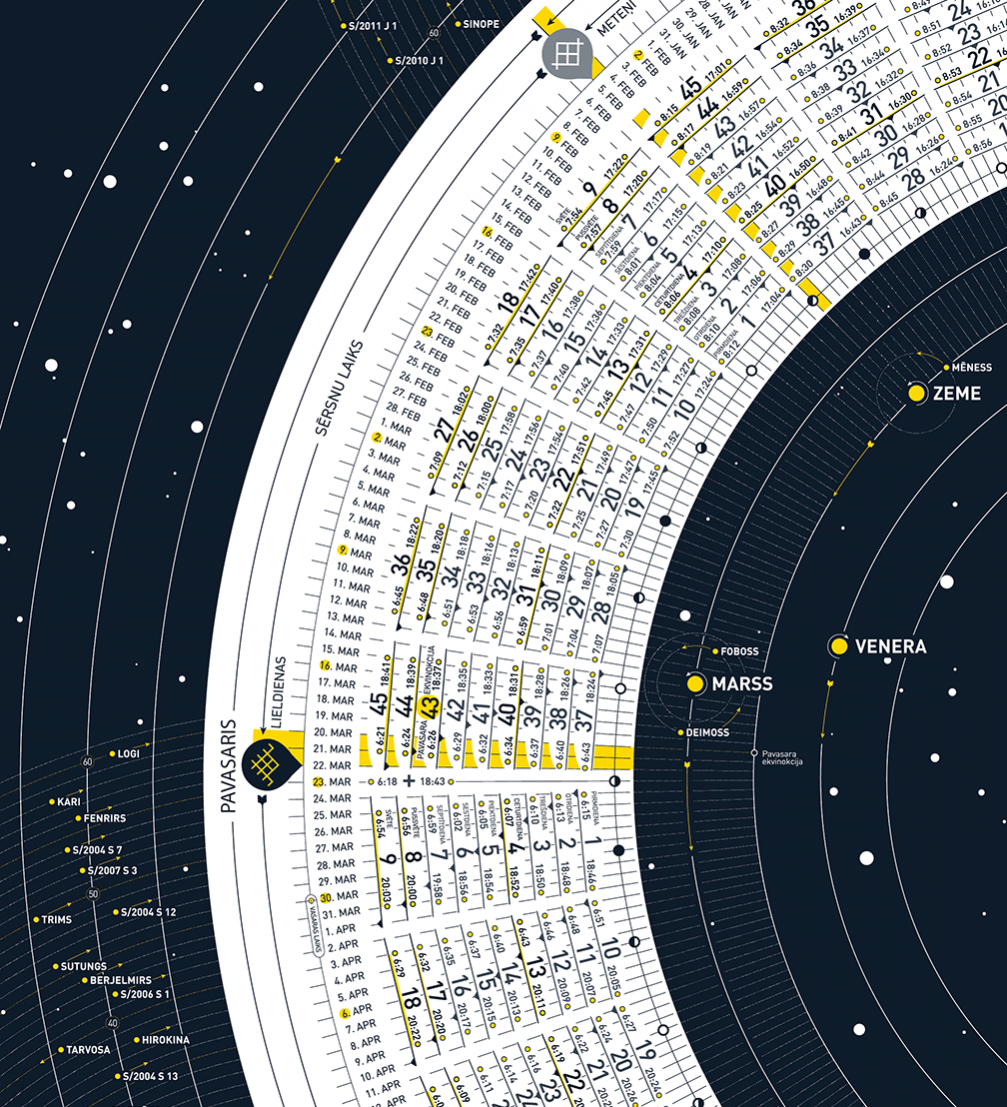
Designer Uldis Trapencieris has created a truly fine graphic design piece — a poster with traditional Latvian time reference diagram. It is a reminder that once there were 9 days in a week and 360 days in a year.
Author of the calendar Uldis Trapencieris says that he came to the idea of making such chart because his daughter is attending Free Māra School, which follows the Solar calendar. Since he wasn’t able to find any decent samples, within a year Uldis studied the ancient time reference system, designed and printed his own calendar.
The calendar should be read counterclockwise, following the trajectory of the Earth. Each segment represents one day. By following its lines, one can determine which day in the Latvian calendar corresponds to the Gregorian calendar. For instance, Meteņi, February 5, is the 45th day of the Frost period, when the sun rises at 8.15 and sets at 17.01.
Latvians used to divide time into weeks of 9 days. Five weeks would make one period with a seasonal celebration at the end, and each two Periods would make a Season. The leftover 5 or 6 days of the year have been added to the calendar after spring and summer celebrations. The poster explains the meanings of these eight seasonal celebrations: Meteņi, Easter, Ūsiņi, Summer Solstice, Dižmāras, Miķeļi, Mārtiņi, Winter Solstice. Next to that, the posters shows the layout of the Solar system, planets with their names, satellites and orbits, equinoxes of the Earth, solstices, nearest and furthest point from the Sun, and phases of the Moon for 2014.
Uldis Trapencieris has been working in magazine publishing for ten years as a layout designer and art editor, but in the evenings he sits at his desk at home and draws, cuts, folds and glues together everything that hasn’t been made yet.
The poster is 59×84 cm, printed in offset. It is possible to order the calendar from its Etsy page, and find out about sales points on its Facebook page.
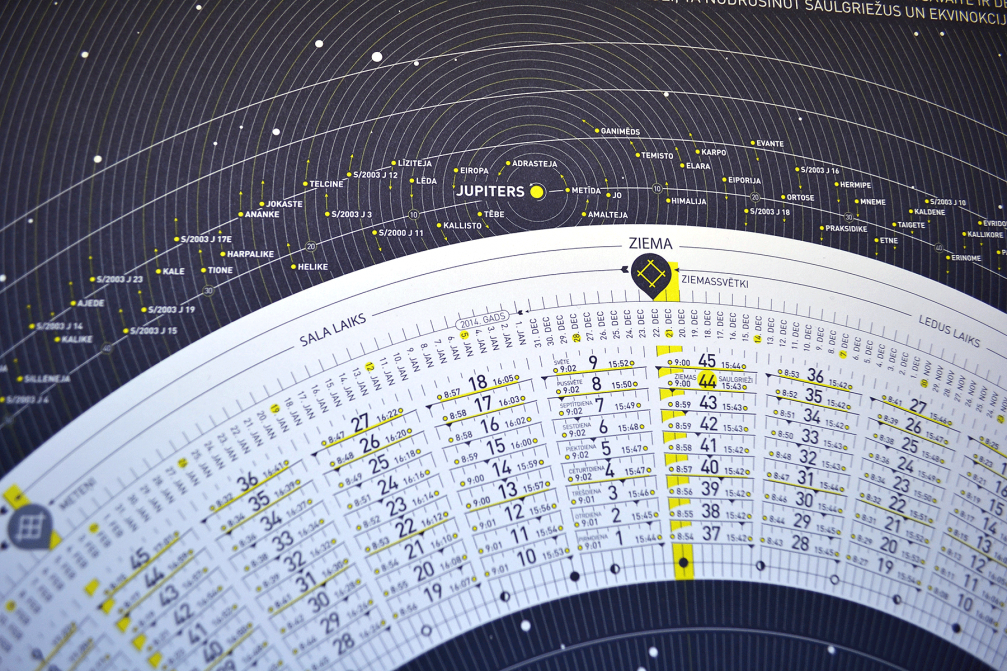
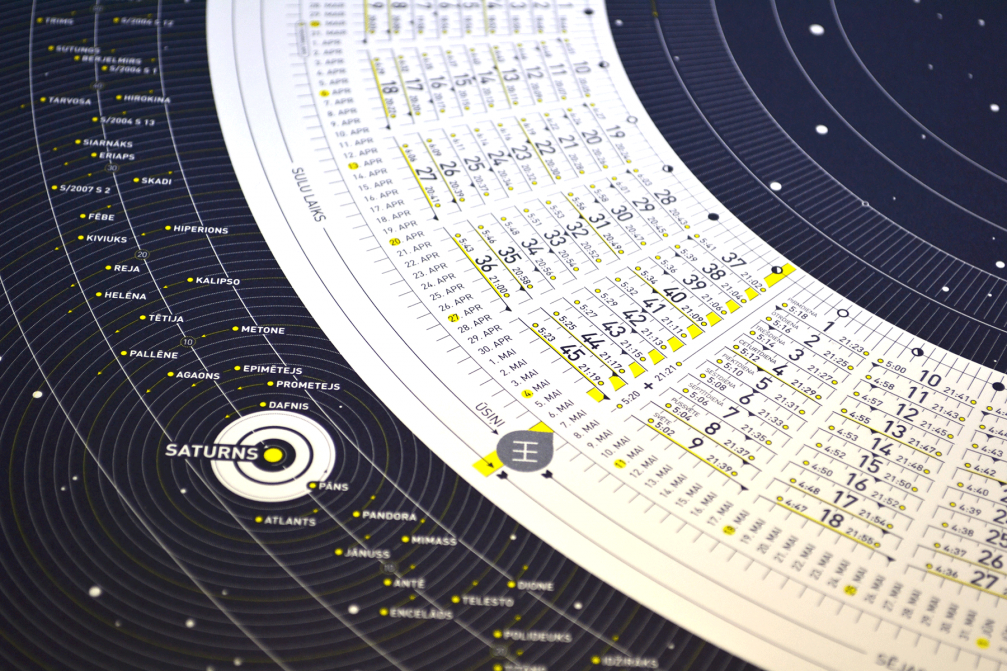
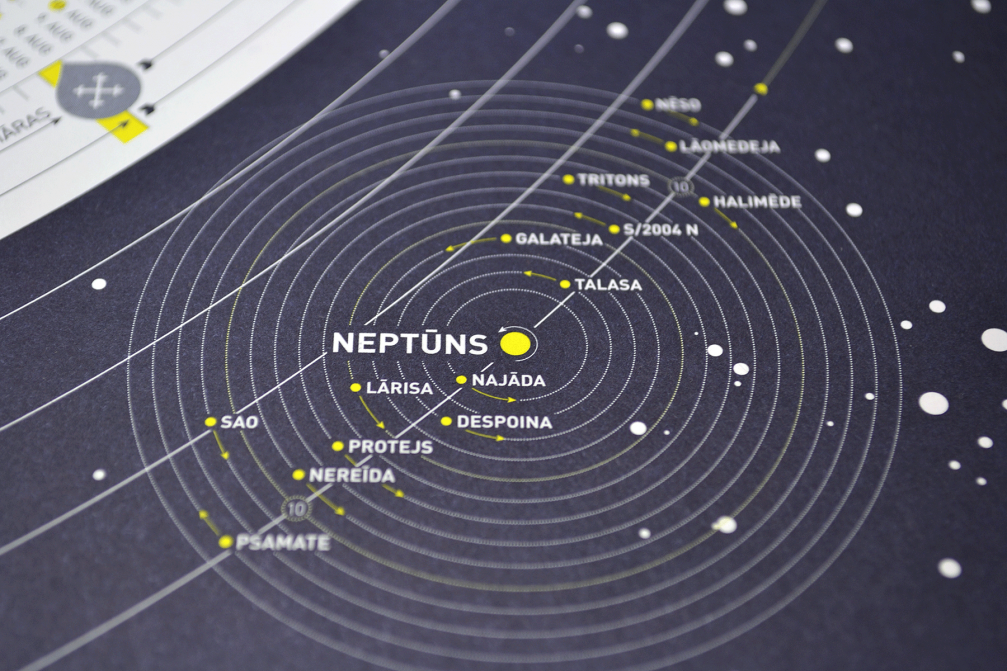
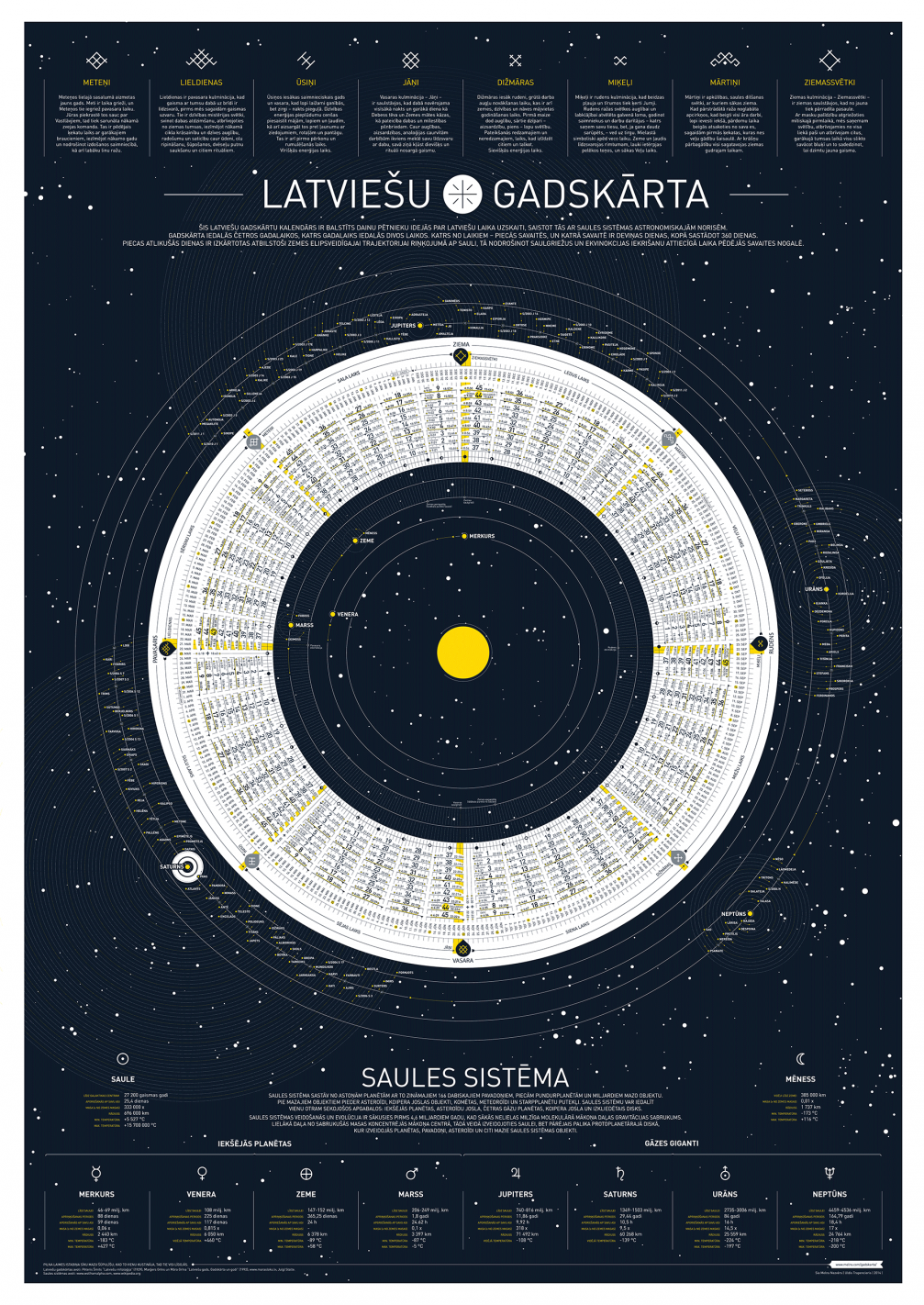
Viedokļi